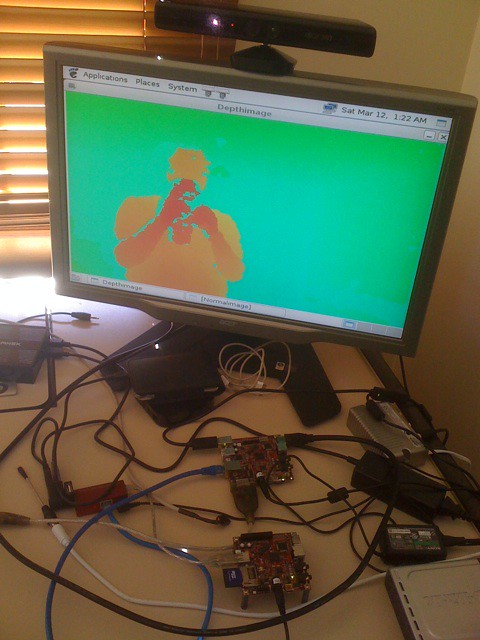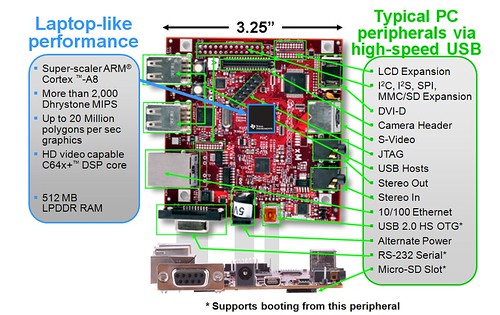1. OpenCV Demo

Beagleboard xM now works fine with kinect + opencv just need gles demos.
2. Auto Chasing Turtle - Autonomous Control With Kinect and Human Facial Detection
http://kinect.dashhacks.com/beagleboard-xm
This creative and fun hack was brought to us by YouTuber HirotakaSter who managed to create a walking robot with a Kinect head that can recognize human faces and then approach them once they are successfully detected.
3. OpenFrameworks + kinect + Android
The SIProp project's members finissed to make "OpenFrameworks x kinect x Android" Development Environment and to run it on Android(armadillo & beagleboard). Watch demo at





